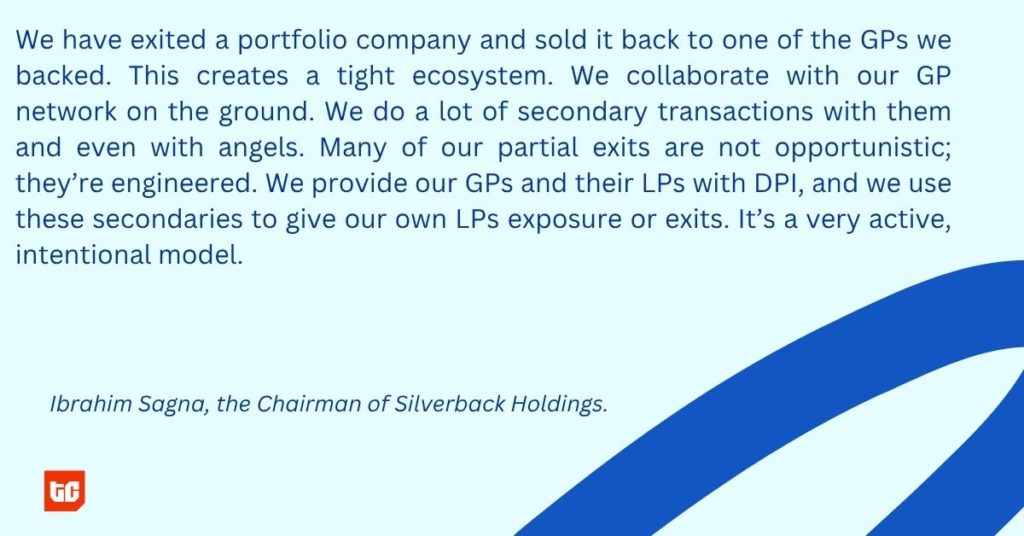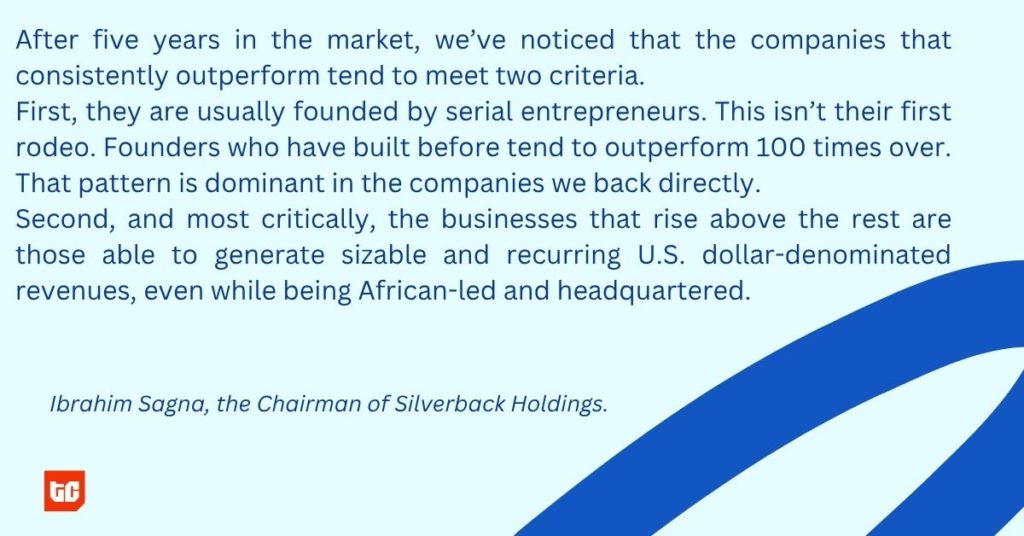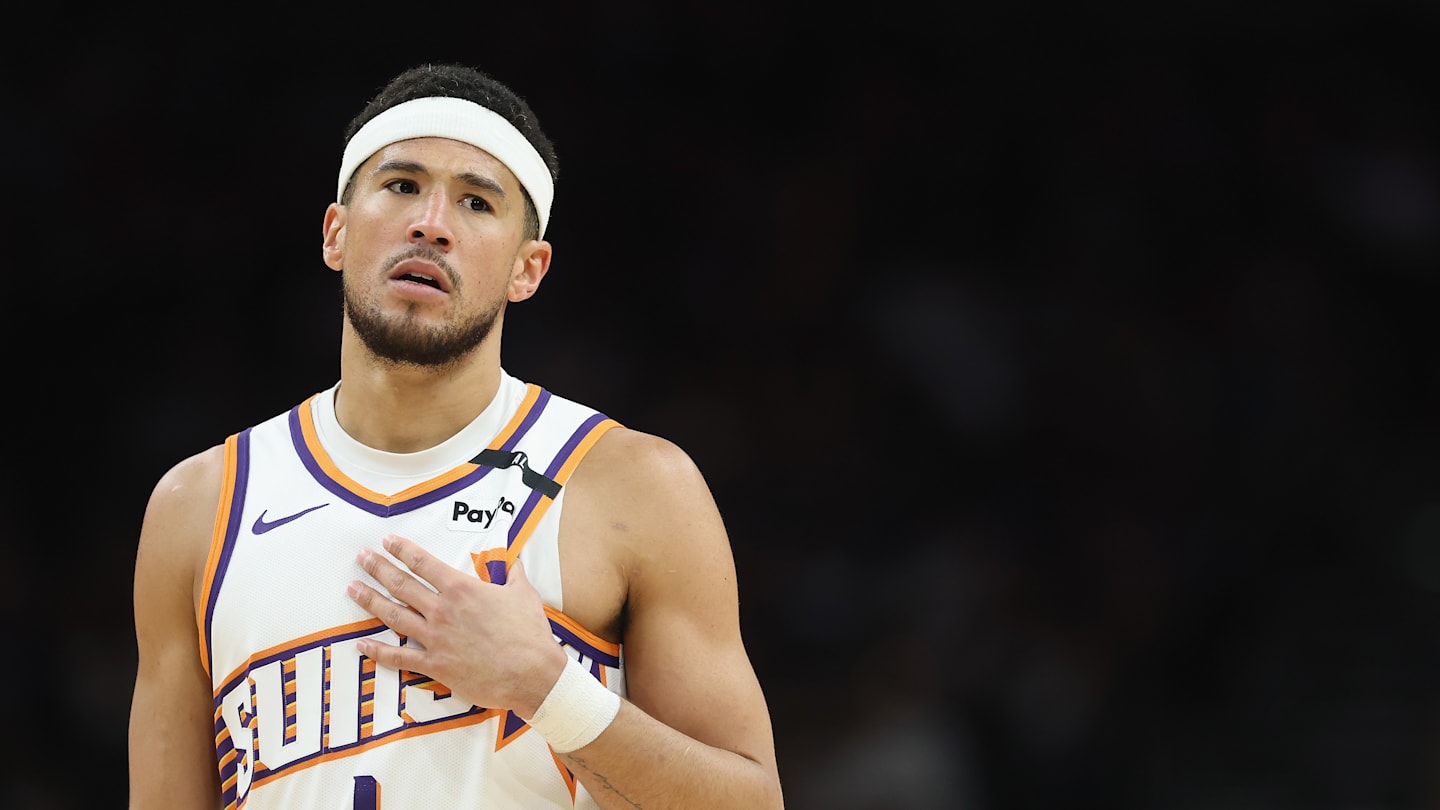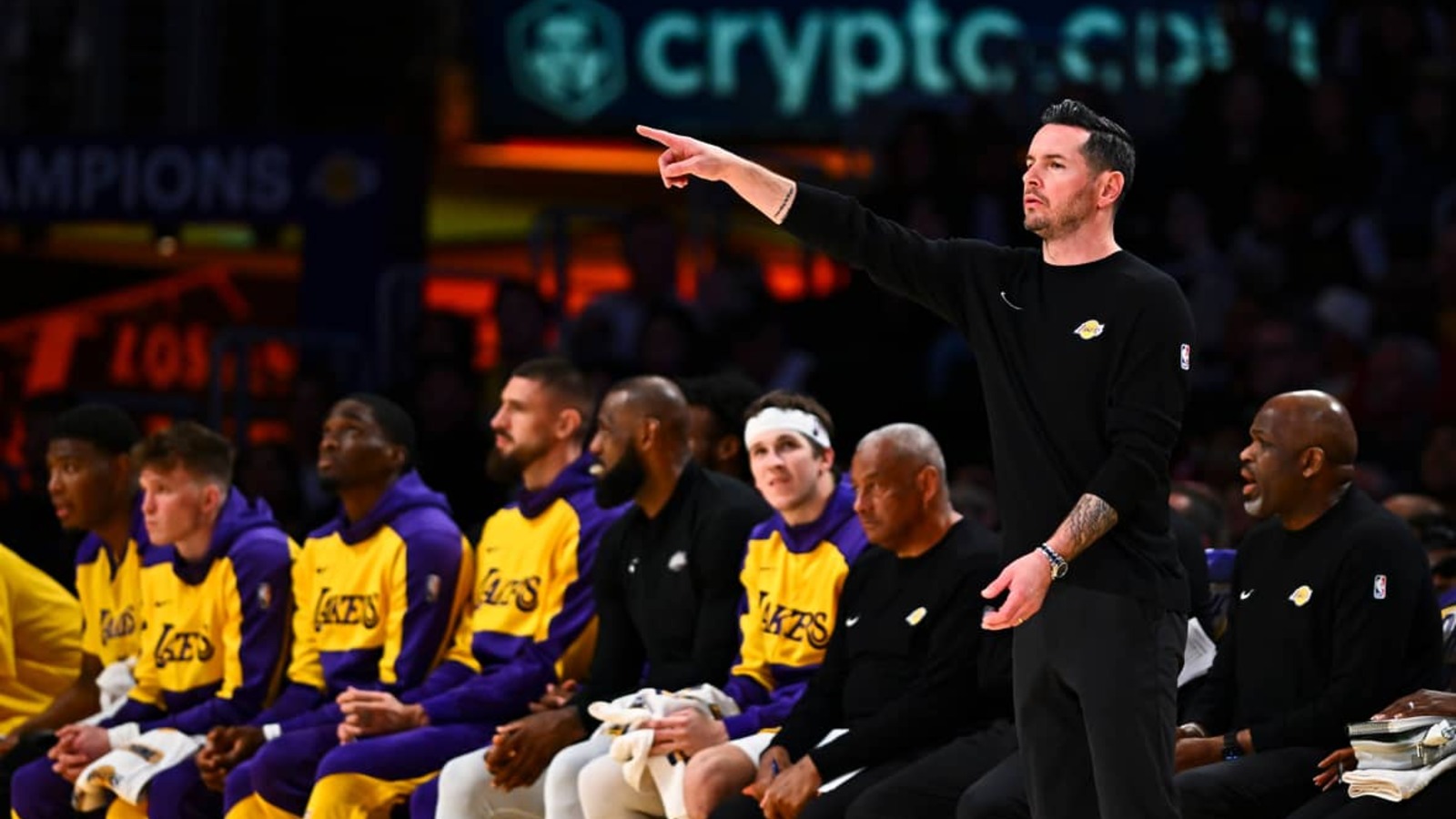The 13.7x blueprint: How Silverbacks' Africa strategy outperformed global markets
Between 2018 and 2022, Silverbacks Holdings, an Africa-focused private equity firm, made a series of investments in multiple tech startups primarily in the fintech and e-commerce sectors.
Those investments are paying off. In the past month alone, the firm has secured two exits by selling part of its shares in Lemfi and Omniretail. Lemfi delivered a 29x return, while Omniretail delivered a more tempered but still strong 5x return.
Though not structured as a traditional venture capital firm, Silverbacks Holdings invests with a VC-style risk appetite, and its portfolio reflects that. The firm backs some of Africa’s most valuable startups, including Flutterwave and Wave, alongside high-growth startups like Moove, Sabi, Kuda, Shuttlers, and Reliance. It also backs nine venture capital firms like Launch Africa and LoftyInc.
Fintech has been its standout performer, generating a 13.7x multiple on invested capital (MOIC), while e-commerce investments have returned a still-impressive 4x MOIC. The firm also invests in Africa’s media, sport and entertainment sectors, backing creator platform AMAKA, the Cape Town Tigers, and the African Warriors Fighting Championship (AWFC).
“We view sports and entertainment as defensive assets,” Ibrahim Sagna, the firm’s executive chairman, told TechCabal. “While the multiples are lower than tech, these businesses have recurring revenue, especially since they are tied to platforms like Netflix or leagues like the NBA.”
Nigeria has been Silverbacks’ most rewarding geography, with its local portfolio returning an average 10.7x MOIC, while Egypt has delivered a 9.7x MOIC, though over a shorter holding period. Overall, the firm’s African investments have returned nearly four times the capital deployed on the continent, far outpacing its global performance. Outside Africa, Silverbacks’ exits have yielded a more modest 1.3x MOIC.
I spoke to Sagna to understand how the firm thinks about investing in Africa, its strategy of partial exits, why it prefers family offices as LPs, how it balances tech and non-tech businesses in its portfolio, and why it invests in VC firms like Launch Africa and LoftyInc.
First, these exits are indicators that follow-on rounds and liquidity are happening across multiple sectors. Most of the exits we’re seeing are tied to investments made between 2018 and 2022. That period, pre- and post-COVID, coincided with an exponential surge in the adoption of technology, both on the African continent and globally.
The value being unlocked now is a reflection of that time frame. In many ways, it shows us the power of timing: most of these gains are from that COVID era, and we’re now three to four years removed from it. These exits tell us not just about timing but also show that startup businesses, when well-positioned, can deliver liquidity within a relatively short window.
Silverbacks operates differently from most traditional fund managers. We use what’s best described as a permanent capital model. Most managers you follow operate within fund cycles—raising capital, deploying it, exiting, then raising a new fund. But Silverbacks is structured more like what’s called a continuation fund.
Continuation funds are built to allow existing limited partners (LPs) who seek liquidity to exit, while giving new LPs the opportunity to replace them. So when we do partial exits, it’s often not about taking chips off the table. It’s about allowing one LP to leave while bringing in another. In fact, in many of these partial exits, we increase our position if we believe in the company.
That’s been the case in names like Flutterwave and Moove. We had partial exits but then re-entered and even increased our exposure when we believed in the long-term potential.
First, most of our LPs are family offices (the private wealth management firm of a high-net-worth family), and the vast majority are not African—they’re based in the Middle East, Europe, and the U.S. We have a few African family offices, but they’re the minority.
We’ve built a process internally: every year, we hold a divestment committee meeting to identify which exposures could lead to divestments and which LPs are requesting liquidity. It’s a bespoke process—we don’t have a one-size-fits-all rule. We review the preferences of our LPs, then decide which portfolio companies could create liquidity to meet those needs.
So again, it’s not just about valuation. It’s also about matching LP preferences. Despite this, we’ve managed to return over 4x the capital we initially invested, and in several cases, we’re still in those businesses. In fact, we’ve often done a partial exit, and then later, repurchased shares in the same company, just on behalf of a different LP base.

Most general partners (GPs) you know manage one or multiple funds with different vintages. We operate as a holding company, and here’s something not everyone knows: we’re LPs in nine venture capital firms, including well-known ones like LoftyInc and Launch Africa.
We do three things with our GPs. We provide them with capital as limited partners. When we see a strong company in their portfolio, we deploy additional capital for follow-ons. We also buy companies from them outright through direct secondaries.
In fact, in a few cases, we’ve even exited a portfolio company and sold it back to one of the GPs we backed. This creates a tight ecosystem. We collaborate with our GP network on the ground. We do a lot of secondary transactions with them and even with angels. So many of our partial exits are not opportunistic; they’re engineered. We provide our GPs and their LPs with DPI, and we use these secondaries to give our own LPs exposure or exits. It’s a very active, intentional model.
Think of it this way: the GPs we back are like high schools, and Silverbacks is the university. We pick the best “students” from their “graduating classes”.
We found Flutterwave, Wave and Moove through people like Idris Bello and Lexi Novitske. These GPs have invested in 200+ companies. We’ve co-invested in at least 10 from them.
So think of our model as one that graduates companies from our VC partners, then scales them further within our holding company. And from this “graduated” pool, we’re able to engineer partial liquidity for our family office LPs.
Because they’re quicker, faster, and better. Family offices are usually run by individual decision-makers, CEOs of insurance companies, construction firms, or business groups. Many of them are long-time clients or business partners from the last 20 to 30 years. They wrote most of the initial cheques alongside my capital and the capital of our partners.
The key here is speed and trust. Their decision-making is faster; there’s no drawn-out bureaucratic process. Also, our model doesn’t require them to participate in a blind pool fund, where they don’t know what they’re getting.
Instead, they can pick at inception—do they want exposure to Flutterwave, Moove, Wave, etc.? That bespoke approach makes it more efficient. And it’s worked: we’ve returned capital to them every year for the past three years. Some of them have realised gains of 5x to 29x. It’s faster, tailored, and more pragmatic.
Yes, definitely. Our initial goal was always to return 3x to 5x on a holistic basis to our investors. Right now, we’re overshooting that by hitting 13x in fintech. But we know this will normalise over time.
We focus on identifying companies that can scale quickly beyond Africa, attract export-oriented revenues, and bring industrial players onto their cap tables. These are typically in fintech, especially remittances or those running global operations.
We started investing in 2018 (Silverbacks incorporated in 2019), and we caught many companies early, under $10 million in revenue. But today, some of those companies are making over $100 million. Moove, for instance, is doing $300 million in revenue.
As we take more exposure in later-stage companies, we expect our MOIC to fall from 13x down to 5–6x over time. It’s a classic J-curve dynamic: early on, steep returns; over time, the curve flattens.
First, to clarify: numerically and proportionally, we are still heavily invested in tech. Go through our site, and you’ll see more tech companies than sports, entertainment, or fashion. We’re exposed to 3 sports companies, 4–5 entertainment companies and 1 fashion company.
But tech, especially fintech, is still the dominant part of our portfolio, both directly and indirectly via our VC partners. Now let’s talk performance: fintech is generating 13x realised gains, e-commerce is at around 4x, and entertainment and media (like movie production and gaming) are doing 2x, while sports has no exits yet.
That hierarchy guides our capital allocation. We will continue prioritising fintech because that’s where we see the highest medium- to long-term upside. That said, we view sports and entertainment as defensive assets. While the multiples are lower, these businesses can become permanent fixtures, especially if they’re tied to platforms like Netflix or leagues like the NBA.
For example, our sports teams are affiliated with the NBA, and our entertainment companies work with major streamers. These global relationships make the businesses USD-earning and stable. They may not scale like fintech, but they endure.
For us, it all comes down to one sentence: we invest in businesses that are able to capture growing pools of U.S. dollar revenue. If you look at our portfolio, you’ll see a range of brands. But after five years in the market, we’ve noticed that the companies that consistently outperform tend to meet two criteria.
First, they are usually founded by serial entrepreneurs. This isn’t their first rodeo. Founders who have built before tend to outperform 100 times over. That pattern is dominant in the companies we back directly.
Second, and most critically, the businesses that rise above the rest are those able to generate sizable and recurring U.S. dollar-denominated revenues, even while being African-led and headquartered.
That’s the edge behind many of our top fintech bets—companies like Moove, Wave, Flutterwave, and LemFi. Their strength lies in their capacity to build from Africa but earn revenue globally and, most importantly, in USD. That gives them base resilience, especially amid the depreciation.
And this logic isn’t exclusive to technology. In entertainment, our movies are sold to Netflix in USD. Our basketball team earns USD playing in the NBA and the China Basketball Association. Even African Warriors, our fight sports investment in Nigeria, is sponsored by groups in Dubai and London, who pay in GBP and USD.
So again, our core investment prompt is: how much U.S. dollar revenue can this business generate on a recurring basis? That one line defines how we think about risk, return, and selection.
Yes, you’re right to point that out. In terms of geographies, our coverage is centred around Africa and the Middle East. Some of our portfolio companies operate in Europe or the U.S., but fundamentally, the continent has been our primary investment tunnel.
And to be very clear: Africa has outperformed by far. Within the vintage we’re discussing, roughly 2019 to 2025, these numbers are superior to most comparable markets. We can’t compare our performance to Asia or Latin America, because we don’t invest there. But based on our thesis and operational focus, Africa has delivered.
That said, it’s not just about the geography. I think our returns are a combination of timing and methodology. We were very fortunate with the momentum, particularly during COVID, when tech consumption surged and capital flooded into startups on the continent. But we were also very intentional about who we partnered with.
As I’ve mentioned, we work closely with nine GP firms, and that collaboration is a cornerstone of our model. So yes, we’ve done well—but it’s because we partnered with the right people at the right time. I want to be very clear: we don’t take full credit for this. It’s the result of a collaborative, intentional, and data-informed approach.

Very sadly, the answer is no. The vast majority of our LP base is international, from the Middle East, Europe, and the U.S. We do have a few investors from Nigeria, South Africa, and Egypt, but they’re the exception, not the rule. The capital base is still overwhelmingly external.
Yes, but not in a blanket way. We don’t wake up saying, “Let’s avoid the XYZ sector.” Instead, it’s a function of our core investment thesis: how much recurring USD-denominated revenue can this business generate?
That’s the core prompt we interrogate every opportunity with. If the business can’t generate FX-protected or dollar-denominated revenue, we see higher risk, especially in African markets where local currency devaluation is a persistent issue.
So sectors like fintech tend to pass this filter easily. But e-commerce, for instance, often collects in local currency and is still very domestically rooted across the continent. That said, some e-commerce players are starting to adapt. Sabi, one of our portfolio companies, is pivoting toward mechanisms that allow it to earn more USD.
We’ve seen healthtech and edtech struggle more in this area, as their revenue is still largely local. And because most of our capital is FX-denominated, we have a responsibility to protect it from local currency exposure.
So, in summary, our avoidance isn’t based on sentiment; it’s driven by our risk management framework.
I think we’ve been very happy with our “horses”, so to speak. But if I had to name a couple we missed, it would be Moniepoint; we had opportunities to get in a couple of times and didn’t.
We also missed out on Paymob, Nala, and TymeBank. We’ve had a few that slipped through. It happens.
Honestly, we’ve been very lucky with our LP base. The majority of our family offices have done business in Africa before. And that makes a big difference.
Our relationships with them are deeply personal, built over the last 20 to 30 years. All of us at Silverbacks are African, from Cairo to Mauritius, and those personal ties are what brought these LPs into the fold in the first place.
Now, for the few U.S. family offices who hadn’t worked in Africa before, yes, we had to do some educational work. But even there, our goal was simple: give them liquidity early. That’s what aligned their conviction with ours.
Today, thanks to our partial exits and returns, they’re as excited as we are. We were always clear about our approach; we wanted to do something different from other fund managers. Now, with performance on our side, we’ve proven that it works.
Look, nothing is absolute. There are already some encouraging signs. The Government of Nigeria, for instance, is experimenting with new vehicles aimed at tech. And while we’re not directly working with them, the Nigeria Sovereign Investment Authority (NSIA) has done a fair amount by backing local fund managers.
I believe Egypt is ahead of the curve. They’ve created platforms and policies that involve local banks funding startups. One of the GPs we backed has even partnered with a structure like that. South Africa also has a relatively active ecosystem in this regard.
But the truth is, we need more track records and more liquidity events to truly shift things.
Even though regulations allow pension funds to allocate 5–10% to PE or VC, these are individuals’ savings, and they’ll always see venture as risky, especially when they can earn 14–20% annually from government treasuries with zero risk.
So what needs to happen? Demonstration of results. It’s on us to prove that this asset class can generate returns and liquidity. That’s the only way we’re going to earn their confidence.
Very intentional. That’s the short answer.
From day one, we’ve been building a closed-loop ecosystem. We don’t have a dedicated investor relations function. Most of our capital is raised by word of mouth, and our community is incredibly collaborative.
Here’s how it works. LPs often start by backing one company. Over time, they double down, sometimes backing five or more of our portfolio companies. CEOs from our tech companies sometimes invest in our sports portfolio, and even some of the GPs we back have invested in our entertainment or sports companies.
This is by design. It’s not accidental. What keeps this ecosystem healthy is the strength of the companies themselves. Our formula is simple: combine privileged access (via our GP partners) with veteran investment insight (from our team, which has 200+ years of collective PE experience). When you compound those two elements, the result is a flywheel of trust and collaboration.
Absolutely. Even before AI hype cycles, we were already data-driven. We rely heavily on the GPs we back, their portfolio data, and our metrics to guide selection.
But yes, we are constantly learning. Our team spans from 30 to 65 years old, bringing maturity and perspective. Meanwhile, most of our GPs are in their 20s to 40s, highly tech-savvy and on the ground.
That mix is powerful. We’re applying what we’ve learnt in technology to traditional sectors that have been treated more like SMEs—media, entertainment, and sports. Tech is the layer that allows these businesses to scale and go global.
So yes, our learning loop is strong, and it’s bi-directional. Our GPs are learning from us, and we’re learning from them. That collaboration between youth and experience is where the magic happens.
We’re betting on secondaries. That’s our primary liquidity engine.
Yes, IPOs will happen. But globally, IPOs are becoming rarer and harder to pull off. And we do not recommend African startups to list in the U.S. The track record is poor. Look at Jumia, Swvl (which we invested in) and Anghami in the Middle East. All of them are listed in the U.S., and all of them struggled primarily due to short selling. That’s an enormous risk for young companies. Even if the company performs, short sellers can drag it down.
Fawry, which is listed locally in Egypt, is a great counterexample. Had it been listed in the U.S., it may have suffered the same fate.
So we believe IPOs, if they happen, should be on local markets but only if local governments support them with policy safeguards, liquidity from sovereign funds and protection from short selling. That’s what they do in the Middle East. If a startup is going public, the government, sovereign wealth funds, and banks back them. That’s the level of coordination required.
Our entire liquidity strategy is engineered around secondaries. It’s what we know, and it’s what we believe will continue to work.
Mark your calendars! Moonshot by TechCabal is back in Lagos on October 15–16! Join Africa’s top founders, creatives & tech leaders for 2 days of keynotes, mixers & future-forward ideas. Early bird tickets now 20% off—don’t snooze! moonshot.techcabal.com













